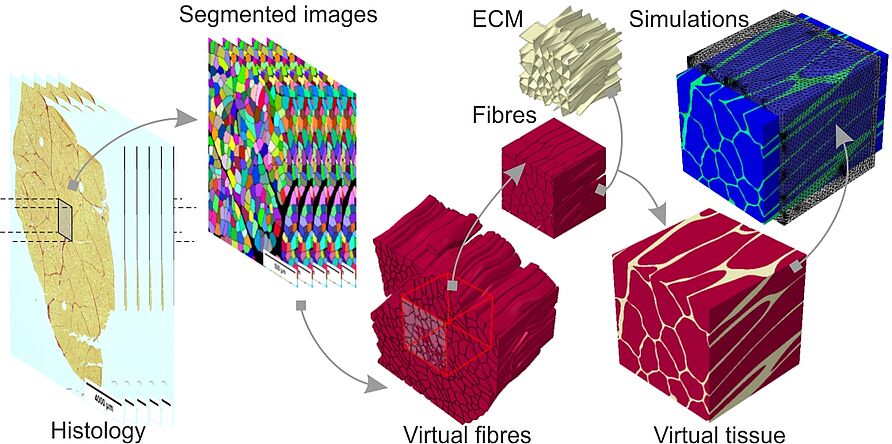In this contribution we create three-dimensional (3D) finite element models from a series of histological sections of porcine skeletal muscle tissue. Image registration is performed on the stained sections by affinely aligning them using auxiliary markers, followed by image segmentation to determine muscle fibres and the extracellular matrix in each section, with particular regard to the continuity of the fibres through the stack. With this information, 3D virtual tissue samples are reconstructed, discretised, and associated with appropriate non-linear elastic anisotropic material models. While the gross anatomy is directly obtained from the images, the local directions of anisotropy were determined by the use of an analogy with steady state diffusion. The influence of the number of histological sections considered for reconstruction on the numerically simulated mechanical response of the virtual tissue samples is then studied. The results show that muscle tissue is fairly heterogeneous along the fascicles, and that transverse isotropy is inadequate in describing their material symmetry at the typical length scale of a fascicle. Numerical simulations of different load cases suggest that ignoring the undulations of fibres and their non-uniform cross-sections only moderately affects the passive response of the tissue in tensile and compressive modes, but can become crucial when predicting the response to generic loads and activation.
R. Kuravi, K. Leichsenring, M. Böl, A. E. Ehret
3D finite element models from serial section histology of skeletal muscle tissue - The role of micro-architecture on mechanical behavior
Journal of the Mechanical Behavior of Biomedical Materials, 113, 104109, (2021) [Link]

